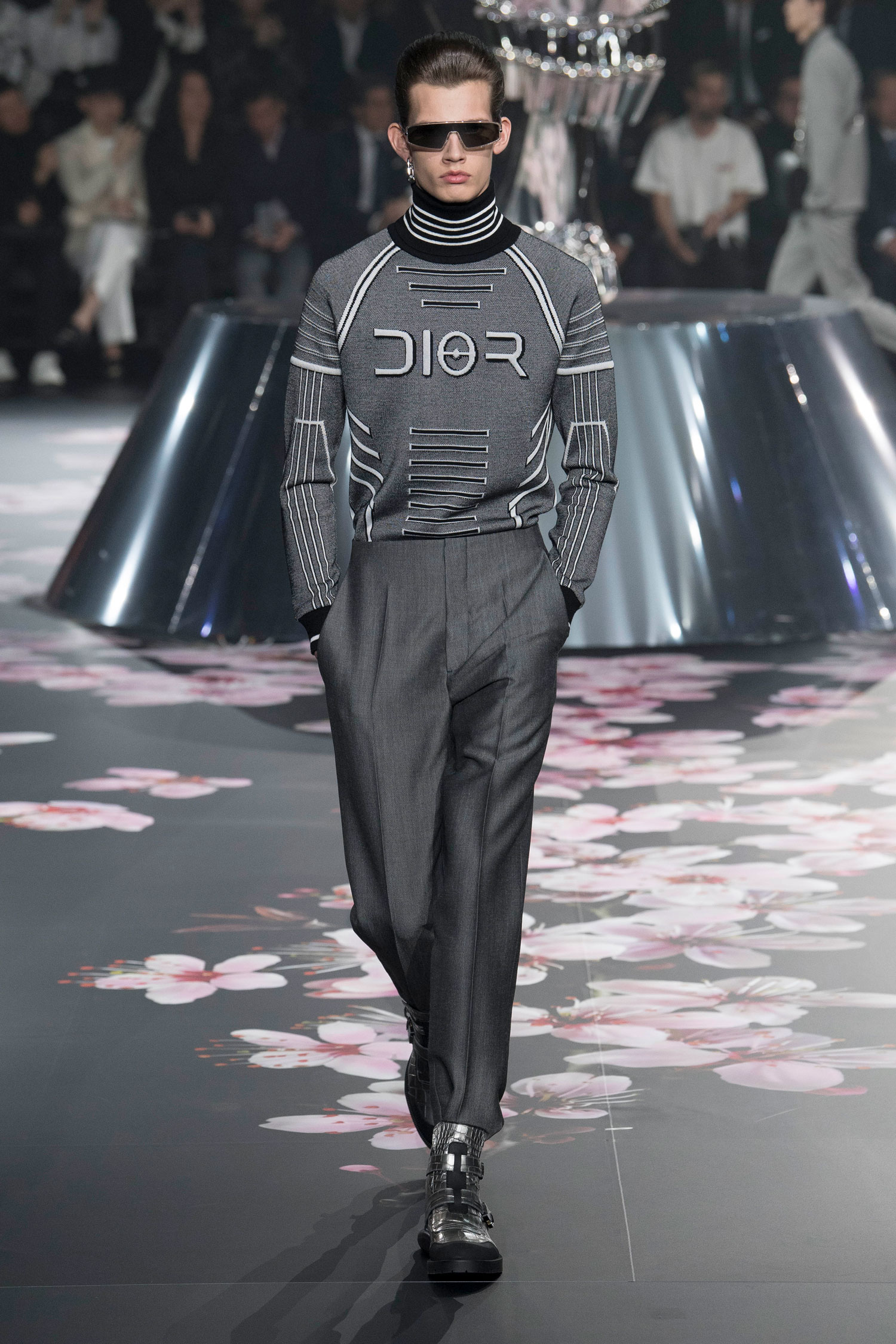That Kim Jones is an immensely talented designer was never a question, but it’s perhaps that we have been taking his abilities for granted while he was with Louis Vuitton. The Englishman, having only recently transferred to the helm of Dior Man (the Homme has been redacted and replaced), has already showed two vibrant and current collections that emphasise his place at the top of men’s high fashion.
His Pre-Fall 2019 collection for the house of Dior, shown in Tokyo at the Telecom Center in Odaiba, was one such display of prowess. Jones’ strength is in seemingly having a grasp of everything the contemporary designer and creative director needs. His affinity for streetwear and its culture is quite unparalleled in high fashion right now; he has a masterful hand over tailoring, cut and silhouette; a brilliant graphic eye that can deftly manipulate even challenging prints into elevated design. Point is: he’s got it all. And it’s perhaps now that he has at his disposal the ateliers of the house of Dior that he has a truer creative freedom.
John Galliano used to talk reverently about the possibilities that designing haute couture at Dior afforded him. A laboratory where dreams were made possible and true only because these skilled teams of craftsmen are behind five or six-figure garments. I saw that kind of wonder of creation in this show as Jones continued his softening agenda. That is, taking out the stiff canvassing - which might be to tailoring what the corset was to dressmaking - behind the codes of menswear and introducing the feminine in an artful way. And this makes complete sense, considering the range of customers and clients his designs will be serving. You’ve got the skate and street crowd that rally around Dior as a status symbol of aspiration and success. You’ve got the older gentlemen who rely on the brand as a clothier of sharply cut suits. You’ve got the trendy fashion customer who wants a bite of the season’s statement prints and items. And you’ve got a range of younger wearers who embody a less rigidly dichotomous view of sex and gender. Think of Ezra Miller in one of Jones’ creations sipping out of a champagne flute pen before the show.
His Pre-Fall 2019 collection for the house of Dior, shown in Tokyo at the Telecom Center in Odaiba, was one such display of prowess. Jones’ strength is in seemingly having a grasp of everything the contemporary designer and creative director needs. His affinity for streetwear and its culture is quite unparalleled in high fashion right now; he has a masterful hand over tailoring, cut and silhouette; a brilliant graphic eye that can deftly manipulate even challenging prints into elevated design. Point is: he’s got it all. And it’s perhaps now that he has at his disposal the ateliers of the house of Dior that he has a truer creative freedom.
John Galliano used to talk reverently about the possibilities that designing haute couture at Dior afforded him. A laboratory where dreams were made possible and true only because these skilled teams of craftsmen are behind five or six-figure garments. I saw that kind of wonder of creation in this show as Jones continued his softening agenda. That is, taking out the stiff canvassing - which might be to tailoring what the corset was to dressmaking - behind the codes of menswear and introducing the feminine in an artful way. And this makes complete sense, considering the range of customers and clients his designs will be serving. You’ve got the skate and street crowd that rally around Dior as a status symbol of aspiration and success. You’ve got the older gentlemen who rely on the brand as a clothier of sharply cut suits. You’ve got the trendy fashion customer who wants a bite of the season’s statement prints and items. And you’ve got a range of younger wearers who embody a less rigidly dichotomous view of sex and gender. Think of Ezra Miller in one of Jones’ creations sipping out of a champagne flute pen before the show.
















